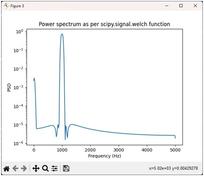Digital Signal Processing (DSP)
Advertisement
DSP stands for Digital Signal Processing. As the name suggests, it’s used for processing digital signals. It can also be applied to represent discrete-time, discrete-frequency, or other discrete domain signals using sequences of digits.
This page describes DSP, its applications, and DSP chip vendors. To understand what a DSP chip consists of, let’s look at its main modules:
- DDR2 Memory: This houses the program or application written in C and converted to hex using compilers. These compilers are specific to the chip developed by the manufacturer or designer. This memory is used to store both data and code.
- Computing Module: This module is similar to the CPU used in a computer. It performs all the arithmetic and logical operations. Nowadays, it’s designed to handle parallel computing/processing through multi-core designs and concepts like pipelining.
- Input and Output Interfaces: This part consists of various ports used for communicating with the external world, as shown in the figure. For example, ADCs and DACs are interfaced with the DSP.

A common application of DSP in our daily lives is recording and playing audio. The audio is input to a microphone and converted to digital form using an Analog-to-Digital Converter (ADC). This digital data is then passed to the DSP, which performs encoding or compression (if required) and stores the digitized voice in memory. When the user plays back the same voice, the DSP reads it from memory, decodes it back to the required format, and converts it back to analog form using a Digital-to-Analog Converter (DAC). The user then hears the sound through a speaker.
DSP Development Tools
There are no common tools available for the DSP development environment. Each DSP chip vendor supplies a development kit with software to develop code that can be ported for their chip. They even provide an instruction set that can be used for highly complex mathematical algorithms.
DSP is used in almost every facet of engineering, including space, medical, commercial, telephone, military, industrial, and scientific applications.
DSP Applications
- Used for sampling - Up-sampling and down-sampling.
- Time domain processing - Correlation and convolution.
- Frequency analysis - Fourier transforms, windowing.
- Audio and Image processing.
- Diagnostic imaging (CT, MRI, ultrasound, etc.).
- Electrocardiogram analysis.
- Medical image storage/retrieval.
- Process monitoring and control.
- Radar, Sonar.
- Data acquisition and earthquake recording and analysis.
- Voice and Data compression.
- Filtering - FIR and IIR filter design.
Popular DSP Chip Vendors
- Analog Devices
- CEVA
- TI (Texas Instruments)
- ARM
- LSI (acquired Agere Systems)
- Cirrus Logic
- Freescale
- Altera (now part of Intel)
- Xilinx
- Intel (Acquired Silicon Hive)
- Mindspeed (Acquired Pico chip)
Advertisement
 RF
RF


